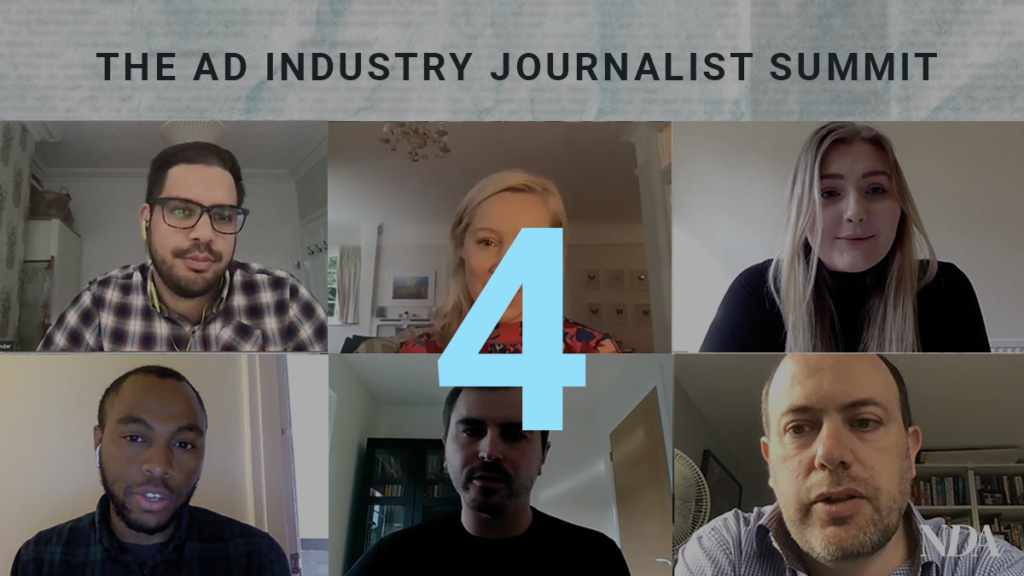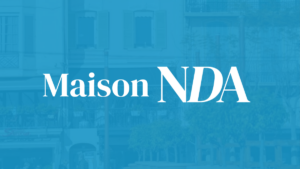The NDA Journalism in the Marketing and Ad Industry Roundtable Summit brought together our industry’s leading journalists to discuss the vital role journalism plays in both supporting and holding to account our industry.
More than ever it seems that one of the continued staples of each business-to-business publication is the role of the industry commentator who has been given the opportunity to address their adopted publication’s audience directly, and in turn raise their own industry profile.
And with editorial teams diminishing in size over recent years, there has been a growing dependency to lean on industry commentators to help analyse events that take place in industry.
With support from Teads, New Digital Age curated a panel of leading advertising journalists to discuss their views on this trend and others that they are seeing and shaping.
Moderated by Editor Justin Pearse, the session included commentary from Digiday Brands Editor Seb Joseph, Creative Brief’s Editorial Director Nicola Kemp, Campaign Editor-In-Chief Gideon Spanier, The Drum’s Head of Content, Cameron Clarke and Mediatel News’s News Editor Michaela Jefferson.
Jefferson believes that despite the endless amount of commentary being distributed through social media, the role of those columnists being regularly published by a publication is elevated, having been chosen for their expertise and experience.
“The same is true if the content is branded. So no, I don’t think the rise of branded content affects Mediatel News negatively or diminishes the value of our journalism, though I do think it is important that the boundaries between branded content and pure journalism are clearly demarcated to audiences.”
Pay to play, perhaps – but a platform that is curated, edited – and trusted
“But there’s also value in hosting the very best of what people are saying and writing right now in one place, where the industry knows it can come to find quality opinion and analysis without having to sift through social media – which is what we aim to offer. And on the flip side, that content benefits from being associated with premium journalistic content and the audience’s understanding that it will have been curated and edited by journalists.
She adds that Mediatel News’s remit was to support a wider events and insights business, rather than rely on ad revenues, so it is able to take a slightly different approach to other titles. Increasingly, many of these opportunities are paid-for, though our panelists insist that editorial rigour is a must.
“We should be less squeamish about branded content,” according to Kemp.“There’s definitely certain aspects of all our businesses that should be paid to play, and we should be open about that discussion.”
Joseph sees an important role for branded content within modern journalism in that it can help produce deep dives on dense industry topics to more traditional webinar sessions which are hosted for sponsors, but he agrees that their publication must be clearly distinguished from regular editorial.
Branded content and avoiding the blurred lines
“I don’t necessarily think that it’s blurred the line between editorial and commercial, because I think when done the right way, there’s no difference. But the issue is when publishers knowingly try to blur the line. There’s an inherent value there [in branded content production] and potential for publishers – it’s definitely something we are doing more of.”
Spanier agrees that good quality branded content can play a role in elevating the reputation of companies. However, he urges caution: “It is a difficult line to police. How much do journalists get involved in the editing or moderating of a panel? It can get complex and problematic if there is any suggestion that journalists are pulling their punches with clients or advertisers but this is not a new challenge.”
It’s a common thread, with Clarke stressing its importance to The Drum’s business albeit carried out through a separate agency and content studio. “We have talked about how we sustain this journalism that we produce, but we can only do these things if we are properly funded. Branded content is one of the ways we can do that.”
For Digiday, branded content allows the publication to boost the coverage it does on particular topics but must be clearly labelled to show that it is ‘commercial’ editorial coverage. “If we are clear and transparent about where content comes from then I don’t think it blurs the line between. For a lot of our readers there is a clear value,” says Joseph.
Spanier concludes: “I see no evidence that branded content will fall out of fashion.”








